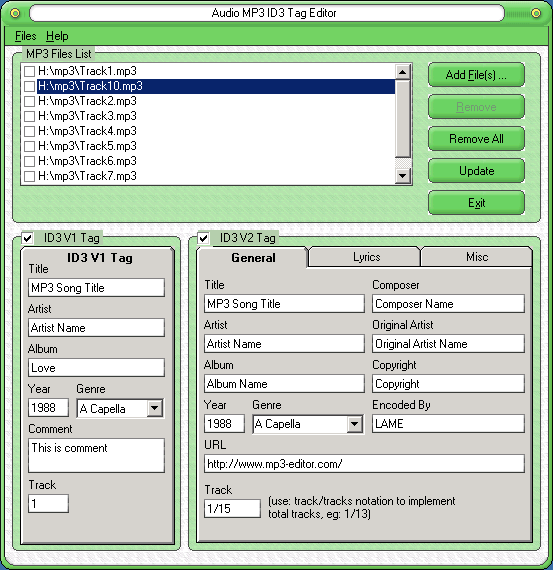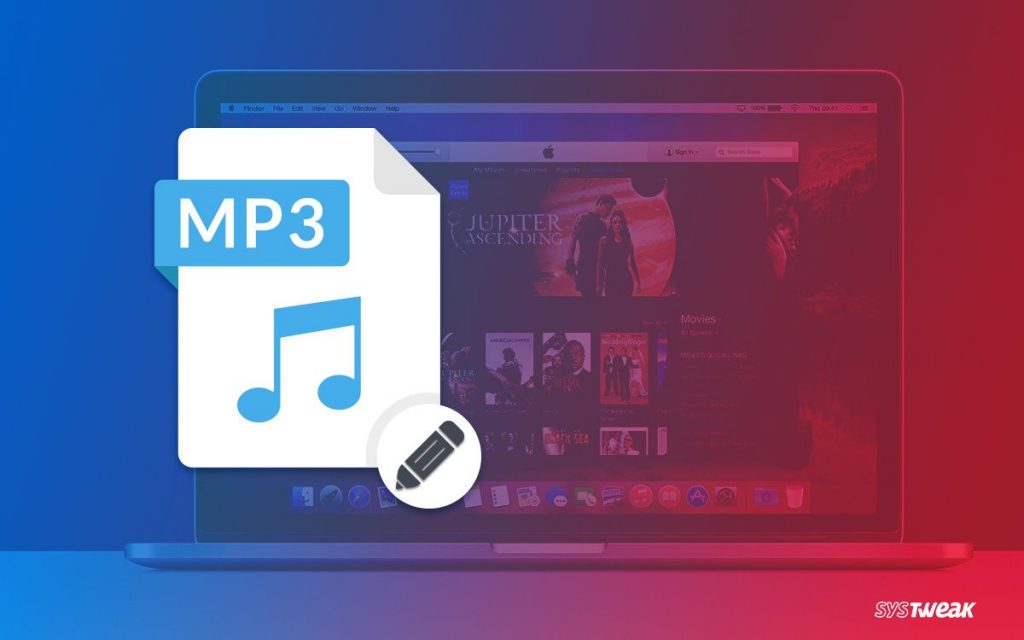

- #Open source mp3 tag editor Bluetooth
- #Open source mp3 tag editor series
- #Open source mp3 tag editor windows
If both devices support 2MPHY, then the connection should be quicker.

Slave Latency: this is the value you originally mentioned - it specifies the number of packets that can be missed before a connection is considered lost.
#Open source mp3 tag editor Bluetooth
The minimum value as per the Bluetooth spec is 7.5ms. The lower the value, the higher the speed. Connection Interval: this specifies the interval at which the packets are sent during a connection.When you make a connection with a remote device, the following factors impact the speed/latency of the connection:.
#Open source mp3 tag editor windows
I don't have much knowledge on UWP, but I can give you the general parameters that affect the speed/latency, and then you can check their availability in the API or even contact Windows technical team to see if these are supported. It's very difficult to get the exact latency because it is affected by many parameters - but you're on the right track by guessing that the connection parameters are a factor of this equation. the difference in frequency between each element of ARR2 is a constant frequency increment which can be calculated using

iterate across ARR2 and for each element calculate the magnitude of this frequency ( each element of ARR2 represents one frequency and in the literature you will see ARR2 referred to as the frequency bins which simply means each element of the array holds one complex number and as you iterate across the array each successive element represents a distinct frequency starting from element 0 to store frequency 0 and each subsequent array element will represent a frequency defined by adding incr_freq to the frequency of the prior array element )Įach index of ARR2 represents a frequency where element 0 is the DC bias which is the zero offset bias of your input ARR1 curve if its centered about the zero crossing point this value is zero normally element 0 can be ignored. do not know whether it has an IFFT api call however if no IFFT ( inverse FFT ) you can write your own such function here is how. essentially you have this time_domain_array -> FFT call -> frequency_domain_array -> InverseFFT call -> time_domain_array. needless to say if I then took ARR3 and fed it into a FFT call its output ARR4 would match ARR2. to a first approximation ARR3 matched ARR1. when I then fed this array into an inverse FFT call ( IFFT ) it gave back a floating point array ARR3 in the time domain. I then fed this floating point array into a FFT call which returned a new array ARR2 by definition in the frequency domain where each element of this array is a single complex number where both the real and the imaginary parts are floating points.
#Open source mp3 tag editor series
In golang I have taken an array ARR1 which represents a time series ( could be audio or in my case an image ) where each element of this time domain array is a floating point value which represents the height of the raw audio curve as it wobbles. The remainder of the array from FFTW contains frequencies above 10-15 kHz.Īgain, I understand this is probably working as designed, but I still need a way to get more resolution in the bottom and mids so I can separate the frequencies better.

However, since FFTW works linearly, with a 256 element or 1024 element array only about 10% of the return array actually holds values up to about 5 kHz. These should be somewhat evenly distributed throughout the spectrum when interpreting them logarithmically. I am also applying a Hann function to each chunk of data to smooth out the window boundaries.įor example, I test using a mono audio file that plays tones at 120, 440, 1000, 5000, 1500 Hz. I have tried with window sizes of 256 up to 1024 bytes, and while the larger windows give more resolution in the low/mid range, it's still not that much. But with so little allocation to low/mid frequencies, I'm not sure how I can separate things cleanly to show the frequency distribution graphically. I understand that audio is logarithmic, and the FFT works with linear data. Everything works, except the results from the FFT function only allocate a few array elements (bins) to the lower and mid frequencies. I run an FFT function on each buffer of PCM samples/frames fed to the audio hardware so I can see which frequencies are the most prevalent in the audio output. I am trying to build a graphical audio spectrum analyzer on Linux.


 0 kommentar(er)
0 kommentar(er)
